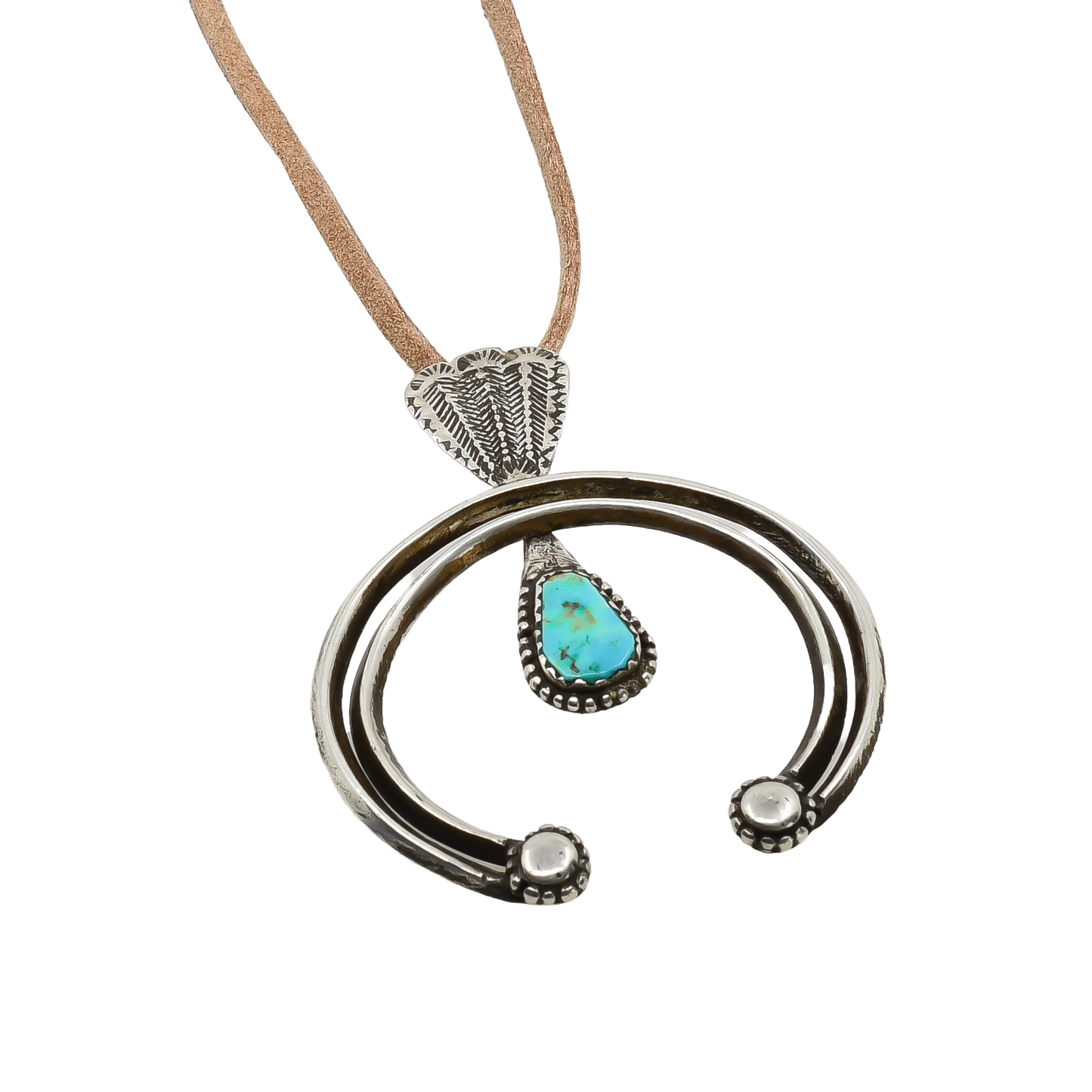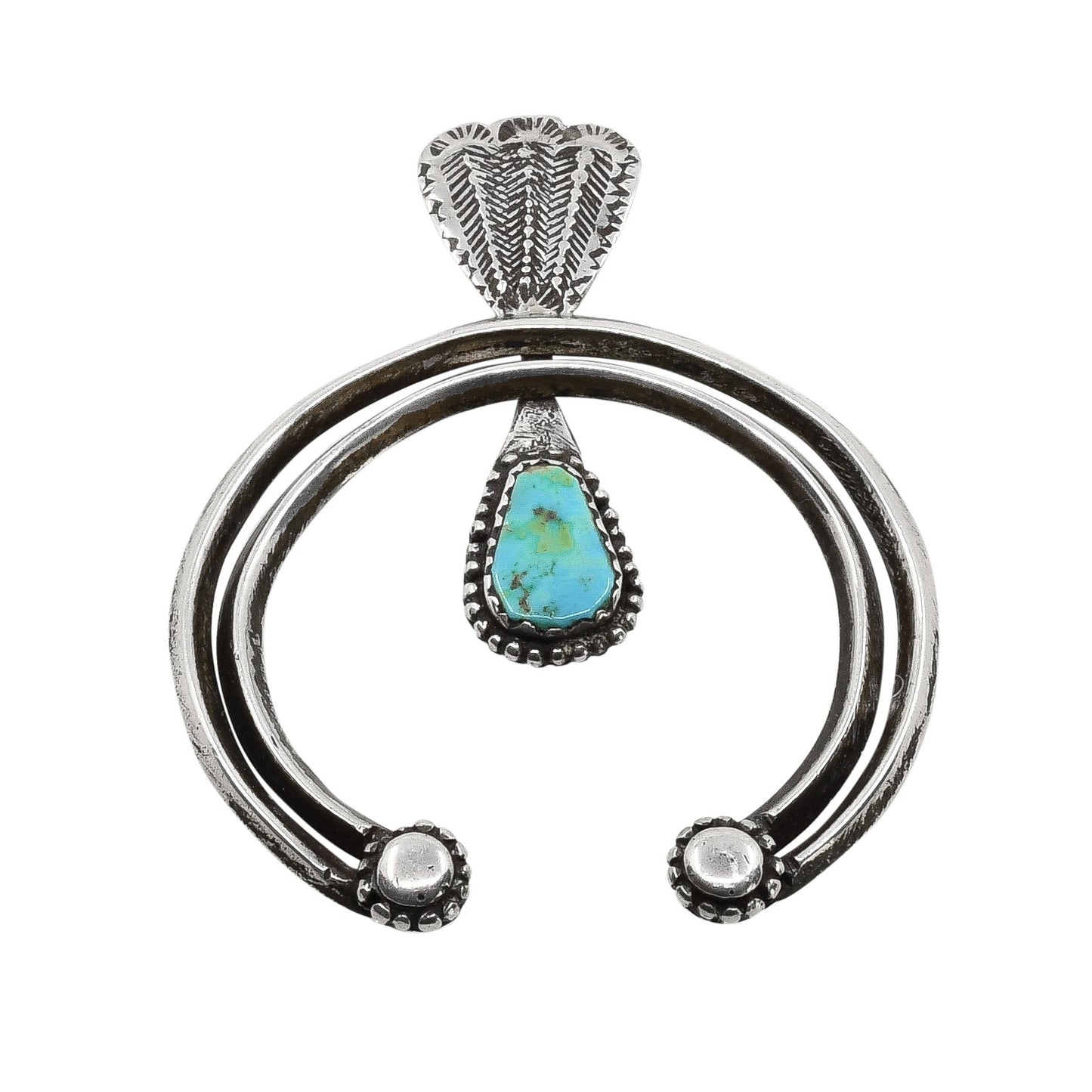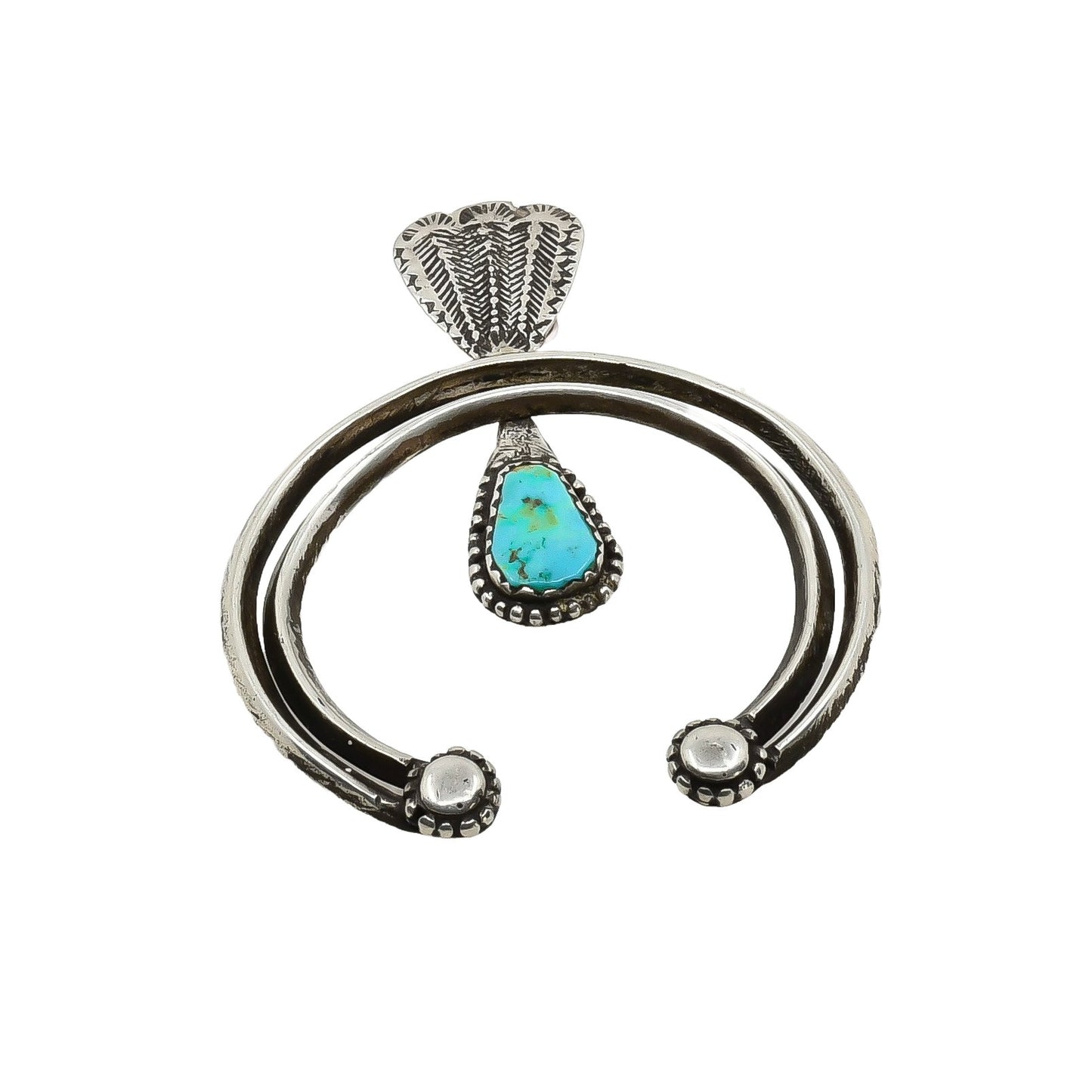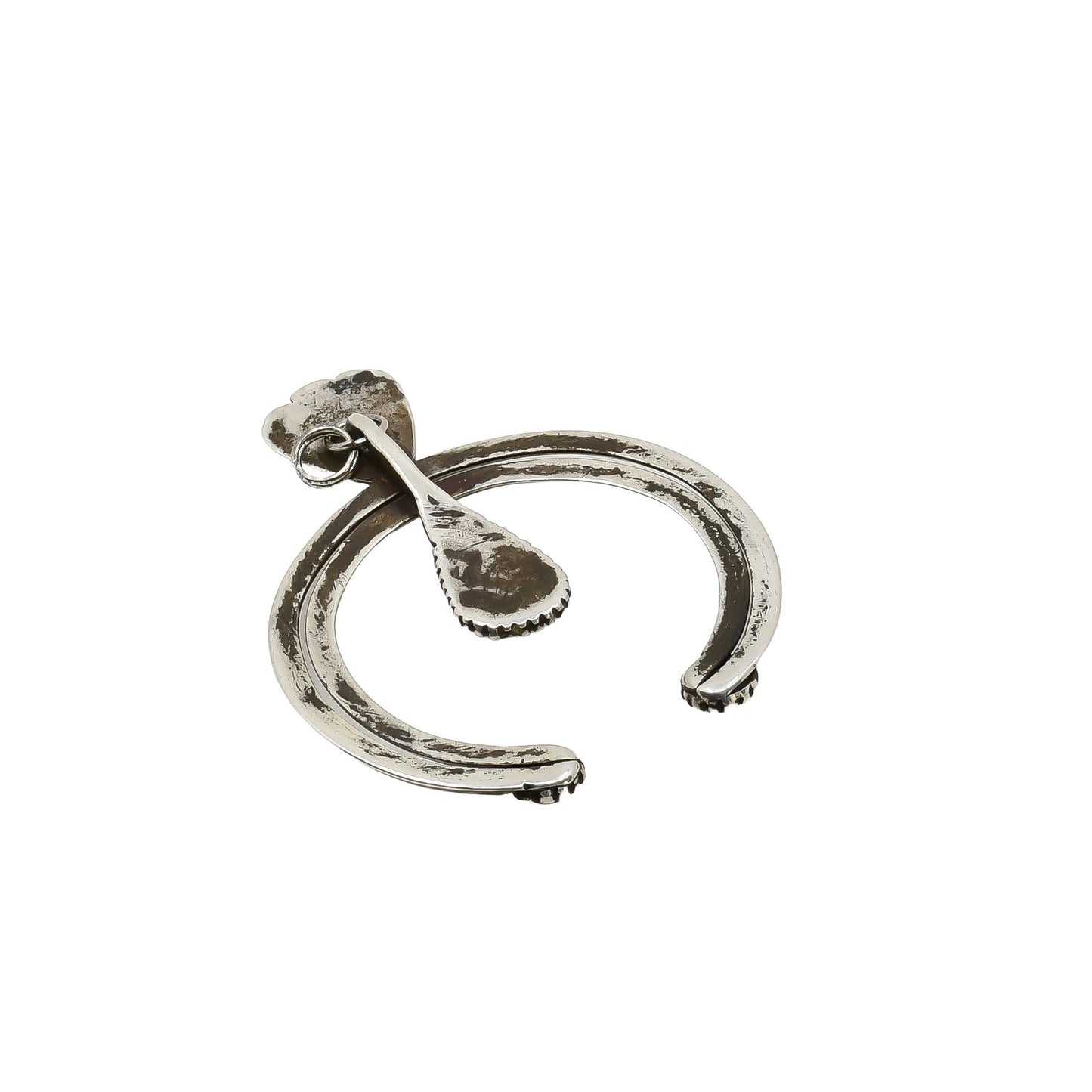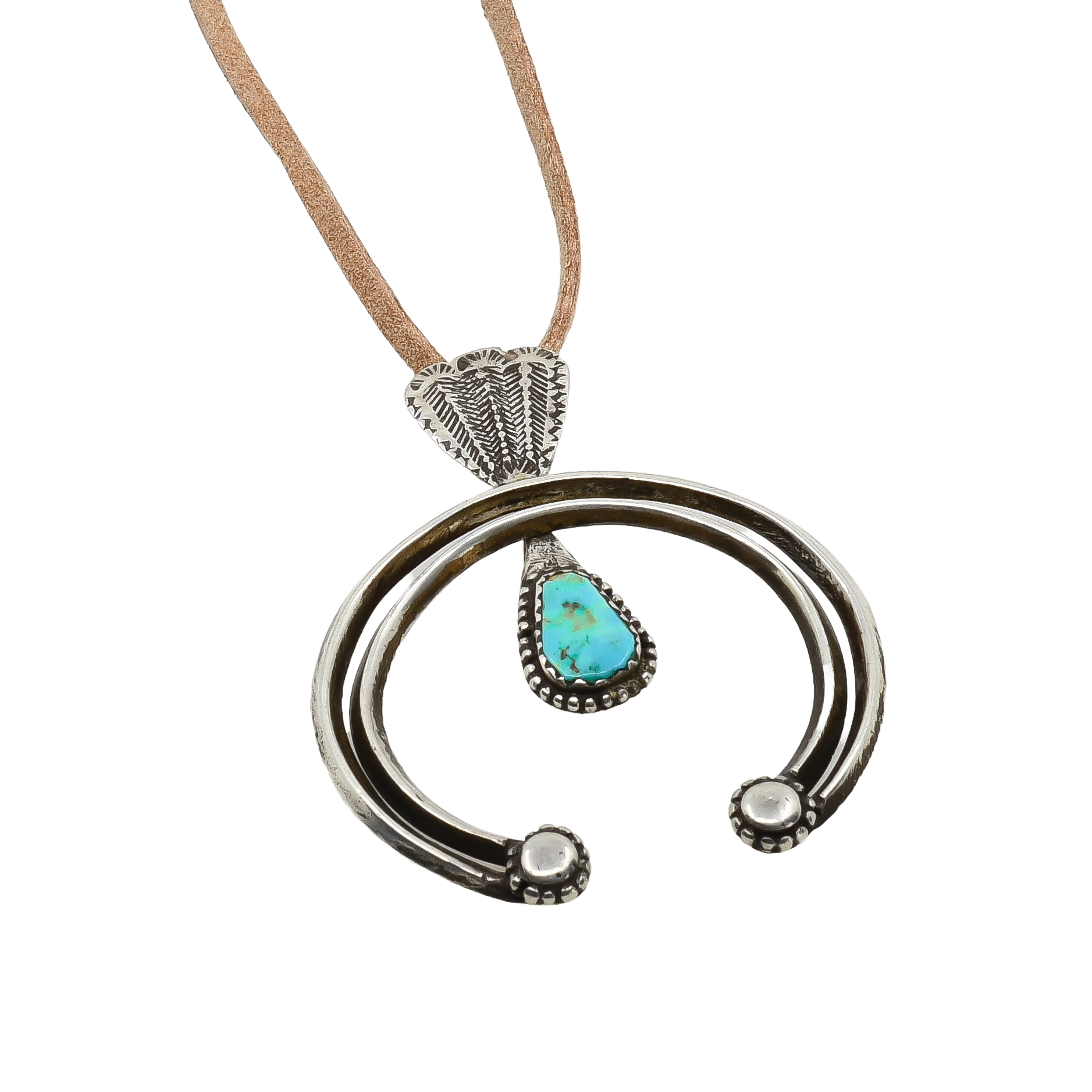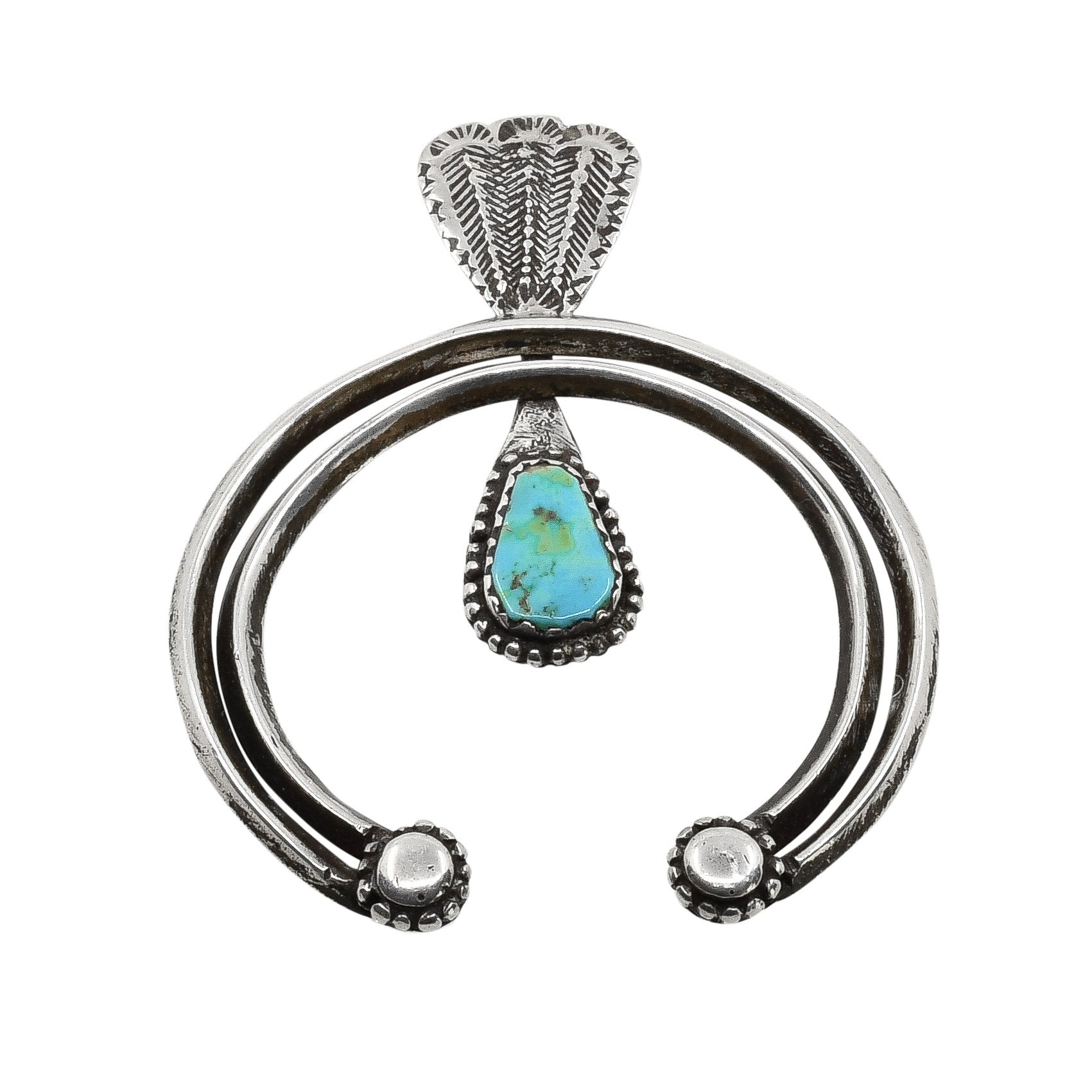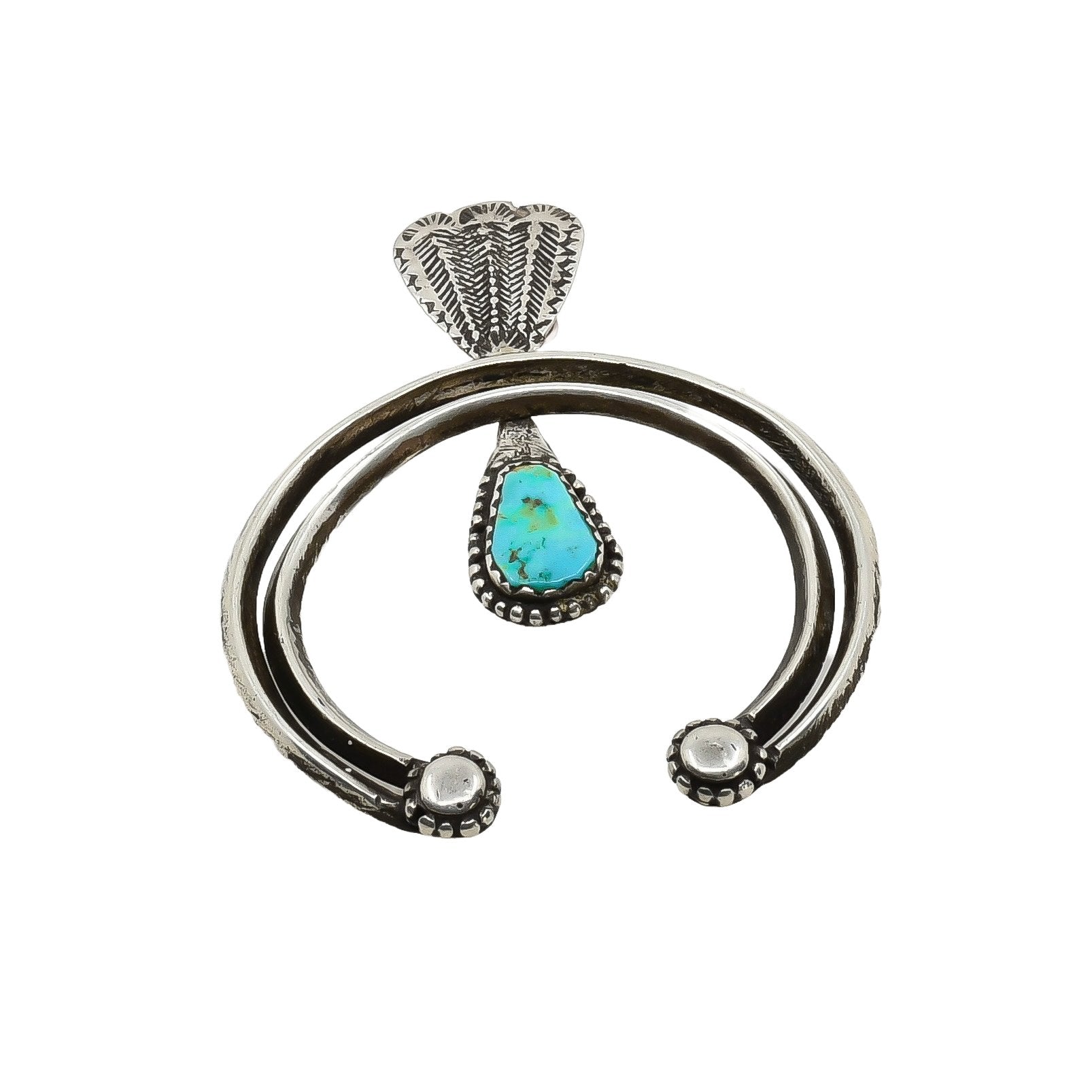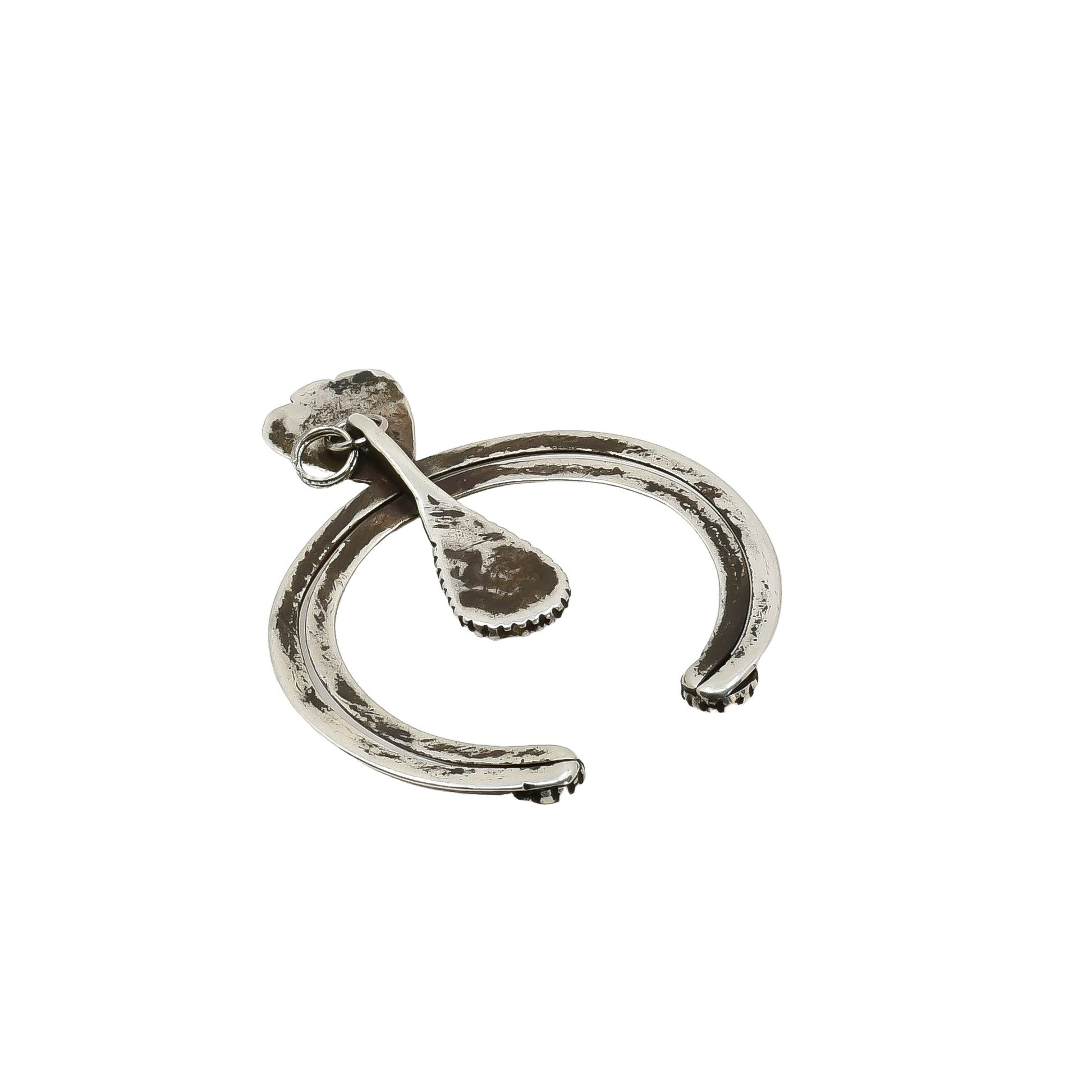Turquoise & Tufa
Early Navajo Double Naja Pendant of Silver and Turquoise
Early Navajo Double Naja Pendant of Silver and Turquoise
Couldn't load pickup availability
This early Navajo pendant just feels like something special!
It's in the shape of a Naja. "Naja" is a Navajo name for the symbol which is believed to have originated in the ancient Middle East as an inverted crescent design. It's said to have represented the Phoenician goddess of fertility, Astarte, and also have been mentioned in the Book of Judges from the Holy Bible. Eventually, the Moors placed the symbol on the bridles of their horses for protection. From the Moors, the inverted crescent came to the Spanish who then carried it to the Americas.
According to Lois Sherr Dubin, who has written books about Native American jewelry, "Either the Navajo saw it on the Spanish Mexicans, or it came to the Southwest through the Plains people, the Shawnee or the Delaware. Again, that’s unclear, but the point is, the form itself has ancient origins.” The Navajo began to use the Naja symbol on the headstalls of their own horses before we ever saw it in its present form - as the center pendant on squash blossom necklaces. For more details on this interesting subject, take a look at this great article.
This particular early double naja is a majestic one. It's likely from an early necklace, with either blossoms or just beads, rather than a horse's headstall. It's the real deal in a world of reproductions, so it has that special soul that only the authentic pieces can have.
It measures 2 1/4" x 1 7/8" and is set with a single piece of natural turquoise. You'll hang it onto a silver chain or a leather strap from a small hoop on the back, and you'll never want to take it off.
From a major collection of fine, mostly historic, Native American silver jewelry.
- Early Navajo Naja
- Handwrought silver set with natural turquoise
- Measures 2 1/4" x 1 7/8"
Share
